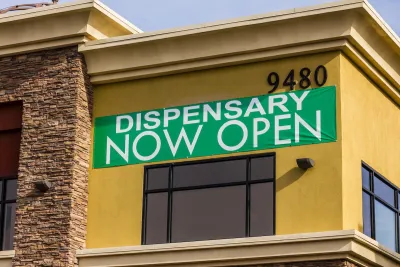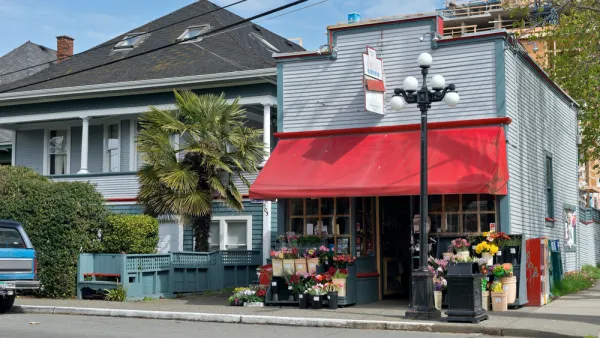Discover the economic impacts of zoning for cannabis businesses, including how these regulations affect local economies, influence real estate values, and shape community development.

The cannabis industry is expanding, and cities and states face many challenges in integrating these businesses into their communities. However, facilitating the growth of this market allows for many economic benefits. Urban planners can use zoning laws to determine the outcome of its development and impact on various areas.
The role of urban planning in shaping economic landscapes
Zoning laws balance business growth with community needs. They ensure that industries like cannabis can flourish while minimizing potential disruptions to residential neighborhoods.
Urban planners use state and local regulations to determine where cannabis companies can operate. Rules like these govern sensitive areas to keep places free from potential exposure to cannabis-related activities.
On top of state regulations, a city’s zoning ordinances further control the types of cannabis operations allowed in certain areas. For instance, some towns enable dispensaries to operate only within business and mixed-use zones, while cultivators may only operate within industrial and economic zones.
These zoning decisions are essential for managing the flow of business and keeping cannabis-related activities away from places that may not be suitable, like residential neighborhoods.
Economic benefits and challenges of proper zoning
Allowing marijuana establishments to operate within a city enables significant economic growth. One advantage is the increase in tax revenue. These facilities contribute to local areas through sales and excise taxes, directly boosting state and city budgets. This revenue stream can be useful for project funding and benefit the community.
New York is using this revenue to drive social change. In 2022, Governor Kathy Hochul announced the creation of a state-run business incubator and a $200 million fund to support social equity applicants in New York’s cannabis industry. This initiative will benefit cities by creating thousands of jobs, eliminating the impact of the war on drugs, and increasing tax revenue through its 9% state and 4% local excise taxes.
However, one major issue with the cannabis industry is navigating community concerns. Although proper zoning limits these businesses to strategic areas, not all residents are on board with having them nearby.
Some may worry about the potential for increased crime, which may lead activists to start a social media movement to prohibit these retailers from establishing a location. Locals who maintain a negative stance on these businesses can keep growers and distributors out even if they have passed all ordinances.
Additionally, the cost of compliance with zoning laws and tax regulations can burden smaller cannabis companies. For instance, many organizations handle large amounts of cash, and the IRS requires them to file Form 8300 for payments over $10,000. Detailed tax filing requirements and strict zoning ordinances may be too much of an obstacle for facilities to establish operations.
The key considerations in zoning for marijuana businesses
Urban planners must balance economic growth and community well-being when creating zoning laws. Here are a few key factors that city planners must consider.
1. Proximity to sensitive areas
Many state laws mandate that cannabis operators must be a certain distance away from where school-aged children gather. For example, marijuana enterprises in Lexington cannot be within 1,000 feet of schools and day care centers to keep young children protected from exposure to cannabis-related activities.
In addition to legal requirements, planners must consider the overall social impact. Locating these businesses too close to residential areas could lead to community backlash, while placing them too far away from high-traffic areas could limit their economic viability.
2. Impact on other businesses
Another crucial factor is how marijuana retailers and distributors interact with other local businesses. While some may complement operations such as wellness centers or pharmacies, others could create strain on certain industries.
Locating a dispensary in an area with similar companies could lead to market saturation. City planners must assess whether a dispensary or grow operation will coexist peacefully with neighboring businesses.
3. Traffic and infrastructure
Marijuana retailers can attract more foot traffic, so ensuring the location can handle increased vehicle and pedestrian activity is crucial. Areas with poor parking availability or inadequate public transportation options could struggle to accommodate the demand and cause community frustration.
Additionally, cultivation facilities and manufacturing operations have unique infrastructure needs. These businesses require a good amount of water, electricity and space, so planners must zone them in areas that can support these utilities without overloading existing infrastructure.
Zoning cannabis enterprises and its economic impacts
Establishing zoning ordinances for marijuana companies can be complex considering all the factors, from state laws and regulations to infrastructure and community impact. Thoughtful planning is essential to ensure industry and economic growth.

National Parks Layoffs Will Cause Communities to Lose Billions
Thousands of essential park workers were laid off this week, just before the busy spring break season.

Retro-silient?: America’s First “Eco-burb,” The Woodlands Turns 50
A master-planned community north of Houston offers lessons on green infrastructure and resilient design, but falls short of its founder’s lofty affordability and walkability goals.

Delivering for America Plan Will Downgrade Mail Service in at Least 49.5 Percent of Zip Codes
Republican and Democrat lawmakers criticize the plan for its disproportionate negative impact on rural communities.

Test News Post 1
This is a summary

Test News Headline 46
Test for the image on the front page.

Balancing Bombs and Butterflies: How the National Guard Protects a Rare Species
The National Guard at Fort Indiantown Gap uses GIS technology and land management strategies to balance military training with conservation efforts, ensuring the survival of the rare eastern regal fritillary butterfly.
Urban Design for Planners 1: Software Tools
This six-course series explores essential urban design concepts using open source software and equips planners with the tools they need to participate fully in the urban design process.
Planning for Universal Design
Learn the tools for implementing Universal Design in planning regulations.
EMC Planning Group, Inc.
Planetizen
Planetizen
Mpact (formerly Rail~Volution)
Great Falls Development Authority, Inc.
HUDs Office of Policy Development and Research
NYU Wagner Graduate School of Public Service






























